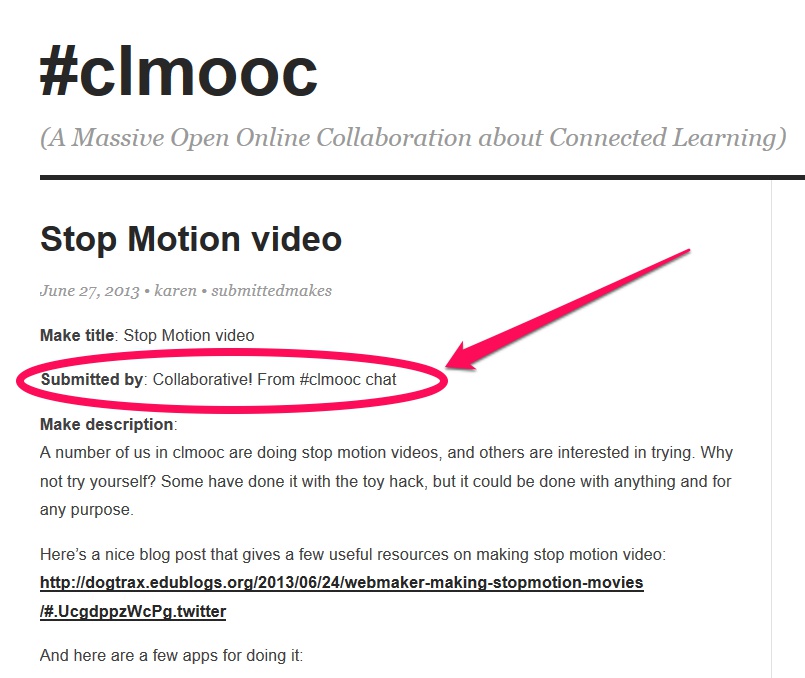In the midst of #clmooc and in the planning stages of some other massive (perhaps) open online collaborations, I’m thinking again about the dynamics of self-direction in a peer learning context.
At the P2PU School of Ed, we’ve played with this quite a bit with varying degrees of success. We’ve tried “hack the syllabus,” design your own activities, and other things. Nothing has been consistently effective.
Then I found #d106. The assignment bank there was a whole new brilliant paradigm.
And so, not needing to reinvent the wheel, we at #clmooc modeled a Make Bank after this (with much thanks to Alan Levine, Martha Burtis, and Jim Groom and the ds106 community). #clmooc is about making, and we wanted the community to be able to “make their own makes” with the Make Bank.
Technically, this was fairly straightforward. Using WordPress as our content management system, we set up Gravity Forms as the front end to capture user-generated data. The entries from this then generate WP posts (they would also generate WP pages), which are then held for moderation. When they are approved by a moderator, they automatically post to a page using a designated category and then using list category posts to publish them all to a given page.
In another similar implementation, we put a search box and tag cloud right on the main page using the widgets on pages plug-in. Another thing we did that really worked well is to include a Gravity Forms field to allow file upload (in this case images). Credit Paul Oh for that idea. It really made the whole thing more interesting and useful.
Technically, I love this approach of using a web-based way to populate a database. I’ve been looking for something like this for a while and have already put it into use on another project. I think I’ll use this for all kinds of things in the future.
From a learning standpoint, I love his model of peer content/course/collaboration development. It seems to be working better than other things I’ve tried. Three weeks into this MOOC and we have had about 45 “makes” submitted.
One of the lovely developments is that some makes have been collaboratively developed on (via Twitter chats or hangouts).
I suspect that some of the reasons that this Make Bank has been successful have been:
- It’s core to the collaboration/course content. We’re all about makes and options for makes.
- It’s simple. (We really worked to simplify the form. Thanks Terry and Joe.)
- It seems somehow granular enough and separate enough that it’s not threatening (possibly unlike hacking a syllabus or an actual course page.)
I’d love to hear others thoughts about this. We’re always iterating!
So, my advice?
- Encourage participant creation especially in terms of their “course”/learning experience.
- Experiment. Try new things and see what works.
- Borrow from others’ successes.


Pingback:The Making of Making Learning Connected: My Part in #clmooc | hokament